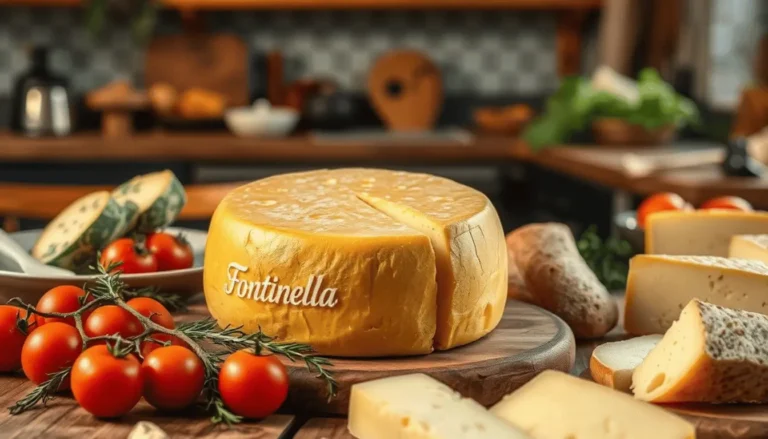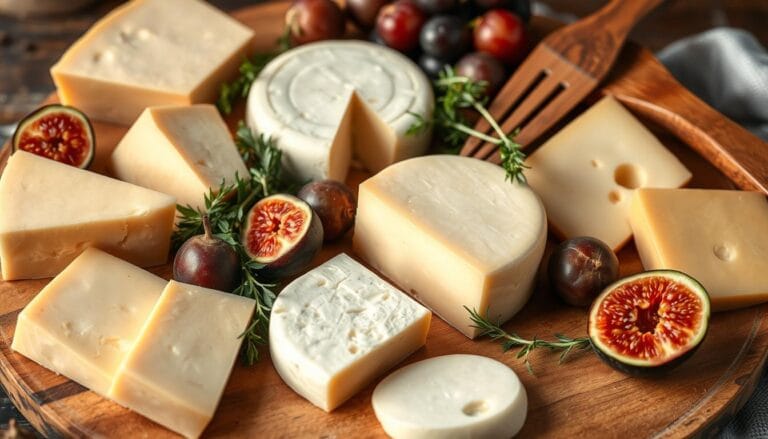Parmesan Perfection: A Deep Dive into the King of Cheeses
Table of Contents
Introduction to Parmesan Cheese
Few cheeses evoke the same level of admiration and prestige as Parmesan. Known as “Parmigiano Reggiano” in its homeland, this celebrated cheese has been a staple of Italian cuisine for centuries. Its name is protected by the European Union’s Protected Designation of Origin (PDO) status, meaning only cheese produced in specific regions of Italy—Parma, Reggio Emilia, Modena, and parts of Bologna and Mantua—can legally be called Parmigiano Reggiano.
Revered for its nutty, savory profile and granular texture, Parmesan has become a global ambassador for Italian culinary excellence. Whether it’s grated over a steaming plate of pasta, shaved atop a fresh salad, or enjoyed in its pure form, Parmesan enhances every dish it touches.
What is it that makes Parmesan so special? To truly appreciate its magic, we must explore its meticulous production process, health benefits, culinary versatility, and delightful secrets.
The Making of Parmesan Cheese

Traditional vs. Modern Methods
Parmigiano Reggiano is not just a cheese; it is an art form. Its production process remains largely unchanged since the Middle Ages. Authentic Parmesan is crafted using a combination of traditional cheesemaking techniques and state-of-the-art quality control methods.
The process begins with high-quality milk sourced from cows fed a diet of grass and hay native to the designated Parmesan-producing regions. This milk is partially skimmed and mixed with rennet, which starts the curdling process. The curd is then cooked and pressed into molds, where it begins to take its iconic wheel shape.
Modern technology is now used to monitor quality, ensuring consistency. However, many steps in the process, such as hand-turning molds and the intricate aging process, remain rooted in tradition.
The Aging Process and Ingredients
What truly defines Parmesan is its aging process, which spans 12 to 36 months. Throughout this period, wheels are regularly inspected and stamped with marks of authenticity. The lengthy aging achieves the cheese’s firm, crystalline texture and imparts its rich, umami-packed flavor.
The ingredients are refreshingly simple yet vital to Parmesan’s distinctive profile:
- Milk (from designated regions)
- Natural rennet
- Sea salt
This adherence to purity ensures a consistent, high-quality product that adheres to PDO regulations.
Health Benefits of Parmesan Cheese
Nutritional Composition
Here’s a table outlining some of the key health benefits of Parmesan cheese:
| Health Benefit | Description |
|---|---|
| Rich in Protein | Parmesan cheese is a great source of high-quality protein, which is essential for muscle repair and growth. |
| High in Calcium | It provides a significant amount of calcium, important for strong bones and teeth. |
| Low in Lactose | Parmesan cheese is low in lactose, making it easier to digest for those who are lactose intolerant. |
| Packed with Vitamins and Minerals | It contains vitamins and minerals such as vitamin A, vitamin B12, zinc, and phosphorus. |
| Probiotic Properties | The natural fermentation process of Parmesan cheese promotes gut health by encouraging good bacteria. |
| Low in Fat | Compared to other cheeses, Parmesan has lower fat content, which can be beneficial for heart health. |
| Rich in Conjugated Linoleic Acid | Contains CLA, which has been linked to reduced body fat and improved immunity. |
| Enhances Digestive Health | The enzymes and bacteria present in Parmesan aid in digestion and promote a healthy gut flora. |
These nutrients make Parmesan one of the most nutrient-dense cheeses available, ideal for anyone seeking to bolster their diet with natural, wholesome ingredients.
Comparison with Other Cheeses
Unlike softer cheeses such as Brie or Camembert, Parmesan is naturally low in lactose due to its aging process, making it a suitable choice for those with lactose intolerance. Its high protein content also makes it an excellent addition to muscle-building diets.

Nutritionist Dr. Elena Rossi highlights, “Parmesan’s balance of protein, calcium, and low carbs aligns perfectly with many dietary needs, making it more than just a flavorful topping—it’s a powerhouse for your health.”
Culinary Uses and Pairings
One of Parmesan’s greatest strengths lies in its versatility. It seamlessly transitions between the roles of a hero and a supporting player on your plate.
Versatile Applications in Cooking
- Grated over classic Italian dishes like spaghetti carbonara or risotto alla Milanese
- Shaved onto salads, such as an arugula and balsamic vinaigrette blend
- Incorporated into baked goods like Parmesan crisps or savory scones
- Paired with soups, where its rind can infuse hearty broths with its signature umami
Ideal Food Pairings

Parmesan’s rich flavors shine brightest when paired with complementary food and drinks:
- Fruits and nuts: Pair it with figs, pears, walnuts, or almonds for a simple yet elegant appetizer.
- Charcuterie boards: It pairs beautifully with cured meats like prosciutto.
Michelin-starred chef Gordon Ramsay advises, “Don’t underestimate its simplicity—just a slice of Parmesan served with honey and a glass of red wine can turn an ordinary evening extraordinary.”
The Art of Buying Parmesan Cheese
Tips for Selecting Quality Parmesan
To ensure you are purchasing authentic Parmesan:
- Look for the D.O.P. stamp, indicating its PDO status.
- Choose cheese that has visible crystals—this ensures proper aging and flavor development.
- Consider the age; younger Parmesan is milder, while older varieties are more intense and crumbly.
Storage and Shelf Life
Once you bring your Parmesan home, store it correctly to maintain its quality. Wrap the cheese in parchment paper, followed by aluminum foil, and keep it in the refrigerator. Properly stored, a wedge can last up to six weeks.
Avoid pre-grated Parmesan, as it often contains fillers that dilute the authentic flavor and texture.
Fun Facts and Myths
Lesser-Known Facts
- Italy produces about 3.6 million wheels of Parmesan annually.
- Each wheel weighs around 80 to 88 pounds and requires roughly 145 gallons of milk to produce.
- The rind of Parmesan is edible—try adding it to soups and stews for extra flavor.
Debunking Common Myths
- “All Parmesan is the same.” Not true! Authentic Parmigiano Reggiano differs significantly from generic “Parmesan” found in many supermarkets.
- “Aged Parmesan is always better.” While aging adds complexity, it depends on your preference for flavor intensity.
The Timeless Appeal of Parmesan
Parmesan isn’t just a cheese; it’s a centuries-old tradition of culinary excellence. From its intricate production process to its unparalleled flavor and versatility, Parmesan has earned its title as the King of Cheeses.
Whether you’re grating it over pasta or nibbling on a slice with a glass of wine, Parmesan transforms the ordinary into the extraordinary. We encourage you to explore its many applications and discover why this iconic cheese continues to captivate food lovers worldwide.
Hungry for more cheese wisdom? Subscribe to our newsletter for tips, recipes, and exclusive insights into the world of cheese.
Happy indulging!
Frequently Asked Questions (FAQ)
1. How should I store Parmesan cheese?
Parmesan should be stored in the refrigerator, wrapped in wax paper or parchment paper and then placed in an airtight container or resealable plastic bag. This helps preserve its flavor and texture while preventing dryness.
2. Can Parmesan be frozen?
Yes, Parmesan cheese can be frozen to extend its shelf life. Grated Parmesan works best for freezing and can be stored in an airtight container for up to six months. However, freezing may slightly affect its texture when thawed.
3. How do I know if my Parmesan cheese has gone bad?
Signs that Parmesan has spoiled include a sour odor, discoloration, or visible mold. If these signs are present, it’s best to discard the cheese and purchase a fresh batch.
4. Is Parmesan cheese suitable for vegetarians?
Traditional Parmesan cheese is made using animal rennet, making it unsuitable for strict vegetarians. However, there are vegetarian-friendly alternatives made with microbial or plant-based rennet.
5. What are some creative uses for Parmesan cheese?
Beyond grating over pasta, Parmesan can be used in soups, risottos, salads, or as a topping for roasted vegetables. Its nutty flavor also enhances baked goods such as savory scones or cheesy breadsticks.








3 Comments
Comments are closed.